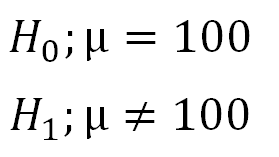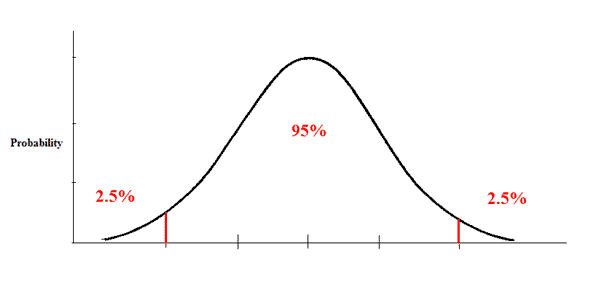Let's perform a one sample z-test: In the population, the average IQ is 100 with a standard deviation of 15. A team of scientists wants to test a new medication to see if it has either a positive or negative effect on intelligence, or no effect at all. A sample of 30 participants who have taken the medication has a mean of 140. Did the medication affect intelligence, using alpha = 0.05?
| Steps for One-Sample z-Test |
|---|
|
1. Define Null and Alternative Hypotheses 2. State Alpha 3. State Decision Rule 4. Calculate Test Statistic 5. State Results 6. State Conclusion |
Let's begin.
1. Define Null and Alternative Hypotheses

|
Figure 1. |
|---|
2. State Alpha
Using an alpha of 0.05 with a two-tailed test, we would expect our distribution to look something like this:

|
Figure 2. |
|---|
Here we have 0.025 in each tail. Looking up 1 - 0.025 in our z-table, we find a critical value of 1.96. Thus, our decision rule for this two-tailed test is:
If Z is less than -1.96, or greater than 1.96, reject the null hypothesis.
4. Calculate Test Statistic

|
Figure 3. |
|---|
5. State Results
Z = 14.60
Result: Reject the null hypothesis.
6. State Conclusion
Medication significantly affected intelligence, z = 14.60, p < 0.05.